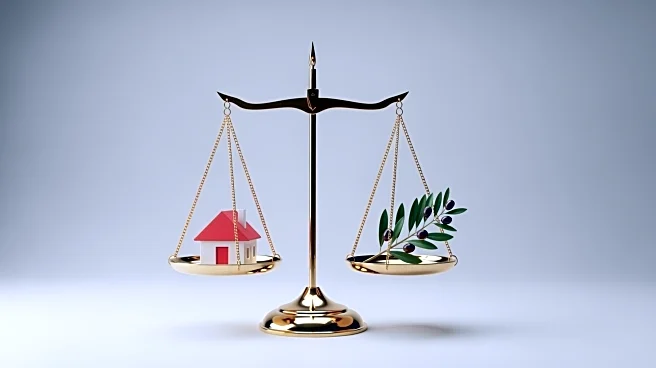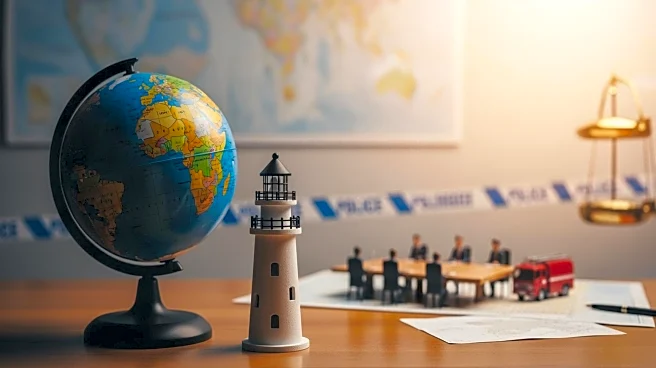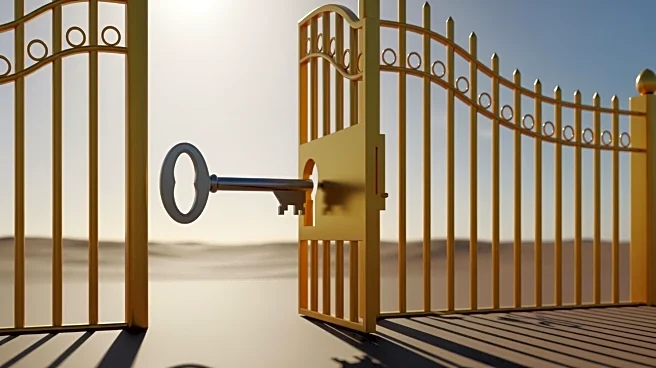What's Happening?
In the aftermath of the recent conflict in Gaza, a comprehensive plan for post-war reconstruction has been proposed, focusing on transforming temporary camps into permanent communities. The plan suggests using a blend of rebuilding, new development, and
future-oriented camps to accommodate the displaced population. This approach aims to provide immediate shelter while laying the groundwork for sustainable communities. The proposal includes developing new neighborhoods on former agricultural land and employing incremental urbanism in less damaged areas to facilitate community participation in reconstruction efforts.
Why It's Important?
The proposed reconstruction plan is crucial for addressing the immediate housing needs of Gaza's displaced population while also setting the stage for long-term urban development. By focusing on sustainable and organized community building, the plan aims to prevent the formation of urban slums and improve living conditions. This approach could serve as a model for post-conflict reconstruction in other regions, emphasizing the importance of community involvement and strategic urban planning. The success of this plan could significantly impact the socio-economic stability of Gaza and contribute to regional peace efforts.
Beyond the Headlines
The reconstruction plan highlights the challenges of balancing immediate humanitarian needs with long-term urban planning. It raises questions about the role of international aid and governance in post-conflict regions, as well as the potential for new urban development to foster economic growth and social cohesion. The plan's emphasis on community involvement and sustainable development reflects broader trends in urban planning and post-conflict recovery, offering insights into how similar challenges might be addressed in other conflict-affected areas.














